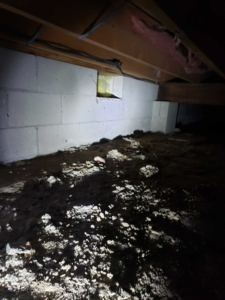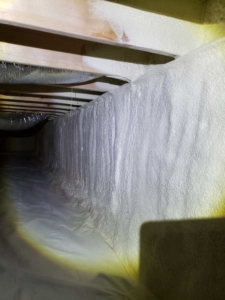What is The Difference Between a SEALED and a VENTED Crawlspace?
By Robert Davis 3/12/2020
So, there has been a lot of talk about the condition of crawlspaces lately. What is a sealed crawlspace? What is a vented crawlspace? Is the crawlspace supposed to be insulated? If so, where does the insulation go?
Basically, there are two types of crawlspaces, sealed and unsealed. An unsealed crawlspace is by far the most common and is classified by the presence of vents in the foundation. In an unsealed crawl, air is allowed to flow under the house year-round. This prevents the build up of unwanted moisture that can lead to mold or rot. Typically, the floor above will be insulated, and the dirt floor below will be covered with a 6 mil plastic. This type of crawlspace was the standard until recently. Here is an example of a vented crawlspace.

Most newer homes are being built with what is known as a sealed crawlspace. Here, the space becomes an extension of the living space of the home. The interior foundation walls are insulated instead of the floor above, and the floor below is sealed tight with 6 mil plastic or concrete. Also, the entire area is heated and cooled by the house HVAC system and a dehumidifier is installed. Here is an example of a sealed crawlspace.

So, to wrap up, a vented crawlspace has vents in the side of the foundation, the dirt floor below may or may not be covered in plastic and the floor above may or may not be insulated. In a sealed crawlspace, there are no vents in the foundation, the foundation walls are insulated, the floor below is sealed with plastic or concrete, the space is heated and cooled, and a dehumidifier is installed.



